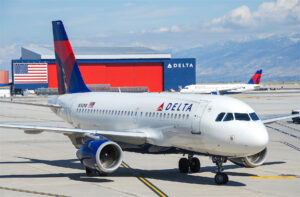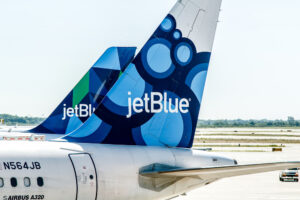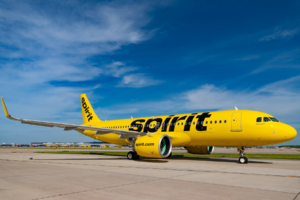How does UA prioritize flights at SFO (or any airport) under ATC flow restrictions?
#1
FlyerTalk Evangelist
Original Poster
Join Date: Nov 2007
Location: Denver � DEN-APA
Programs: AF Platinum, EK Gold, AA EXP, UA 1K, Hyatt Globalist
Posts: 21,638
How does UA prioritize flights at SFO (or any airport) under ATC flow restrictions?
I should know better having lived in San Francisco for years, but we had the misfortune to be booked on UA2148 yesterday from SNA-SFO. Scheduled departure was 1:35pm. The flight ultimately departed at 9:28pm and arrived 8 hours and 9 minutes late. LOL. We weren't in a big hurry and fully expected some delay but 8+ hours?? Although some other short-haul inbound flights (LAX-SFO) were cancelled, the bulk of the UA flights arrived with much less delay. How does UA prioritize which flights and which cities get cleared for limited ATC slots inbound to SFO during weather?
AS had a much better record of SFO bound flights although they did have one SJC diversion, which would have perfectly fine with us. We wound up bailing on UA and booked the last two seats on a WN SNA-OAK flight. If UA doesn't give a crap about SNA, guess I'll just book AS which I've already done for our Friday return. Interestingly enough, UA has already and proactively refunded our ticket.
AS had a much better record of SFO bound flights although they did have one SJC diversion, which would have perfectly fine with us. We wound up bailing on UA and booked the last two seats on a WN SNA-OAK flight. If UA doesn't give a crap about SNA, guess I'll just book AS which I've already done for our Friday return. Interestingly enough, UA has already and proactively refunded our ticket.
#2
Join Date: Apr 2004
Location: EWR, PHL
Programs: UA1k 3MM, AA Plt, peasant on everybody else, elite something or other at a bunch of hotels.
Posts: 4,637
IME, west coast regional flights are the first ones to be cancelled or delayed. This allows for longer distance flights to continue to SFO without diverting.
My rule for connecting in SFO is to book the first flights of the day out of SoCal airports as they are usually - but not always - safe.
My rule for connecting in SFO is to book the first flights of the day out of SoCal airports as they are usually - but not always - safe.
#4
Join Date: May 2001
Location: San Francisco/Bangkok
Programs: Alaska 75K United 1K
Posts: 1,415
I should know better having lived in San Francisco for years, but we had the misfortune to be booked on UA2148 yesterday from SNA-SFO. Scheduled departure was 1:35pm. The flight ultimately departed at 9:28pm and arrived 8 hours and 9 minutes late. LOL. We weren't in a big hurry and fully expected some delay but 8+ hours?? Although some other short-haul inbound flights (LAX-SFO) were cancelled, the bulk of the UA flights arrived with much less delay. How does UA prioritize which flights and which cities get cleared for limited ATC slots inbound to SFO during weather?
AS had a much better record of SFO bound flights although they did have one SJC diversion, which would have perfectly fine with us. We wound up bailing on UA and booked the last two seats on a WN SNA-OAK flight. If UA doesn't give a crap about SNA, guess I'll just book AS which I've already done for our Friday return. Interestingly enough, UA has already and proactively refunded our ticket.
AS had a much better record of SFO bound flights although they did have one SJC diversion, which would have perfectly fine with us. We wound up bailing on UA and booked the last two seats on a WN SNA-OAK flight. If UA doesn't give a crap about SNA, guess I'll just book AS which I've already done for our Friday return. Interestingly enough, UA has already and proactively refunded our ticket.
so AS has same issues on mid con routes
#5
FlyerTalk Evangelist
Original Poster
Join Date: Nov 2007
Location: Denver � DEN-APA
Programs: AF Platinum, EK Gold, AA EXP, UA 1K, Hyatt Globalist
Posts: 21,638
I guess the proper question is why do some west coast flight really get the shaft as opposed to just getting the regular shaft? 
As my wife reminded me, no more UA to SFO in months not named September and October. Outside of those months, AS and OAK would seem to be the wise choice.

As my wife reminded me, no more UA to SFO in months not named September and October. Outside of those months, AS and OAK would seem to be the wise choice.
#6
Join Date: Jun 2014
Programs: UA MM
Posts: 4,148
This isn't specific to SFO but probably pertains to it....
When arrival capacity decreases, the FAA contacts the airlines and requests they cut xx% of their flight arrivals in each time slot (one hour each?). The airlines obviously don't touch flights which are already in flight. After that, they tend to prioritize the flights toward canceling the ones which have the lowest passenger counts, typically regional jets.
When arrival capacity decreases, the FAA contacts the airlines and requests they cut xx% of their flight arrivals in each time slot (one hour each?). The airlines obviously don't touch flights which are already in flight. After that, they tend to prioritize the flights toward canceling the ones which have the lowest passenger counts, typically regional jets.
#7
FlyerTalk Evangelist
Join Date: Oct 2001
Location: Austin, TX
Posts: 21,515
This isn't specific to SFO but probably pertains to it....
When arrival capacity decreases, the FAA contacts the airlines and requests they cut xx% of their flight arrivals in each time slot (one hour each?). The airlines obviously don't touch flights which are already in flight. After that, they tend to prioritize the flights toward canceling the ones which have the lowest passenger counts, typically regional jets.
When arrival capacity decreases, the FAA contacts the airlines and requests they cut xx% of their flight arrivals in each time slot (one hour each?). The airlines obviously don't touch flights which are already in flight. After that, they tend to prioritize the flights toward canceling the ones which have the lowest passenger counts, typically regional jets.
They won�t divert planes that are already in the air unless they absolutely must.
They will try to account for onward scheduling of the crew and aircraft also � if your plane is ferrying in the crew for a once-daily flight, that might bump its priority.
Finally, all else being equal, they would rather delay one flight 8 hours than two flights 4 hours. Not only is that fewer irate passengers � because, let�s face it, people are about as likely to get irate about a 4 hour delay as they are an 8 hour delay � it also looks better in their stats.
#8
Join Date: Feb 2018
Programs: None
Posts: 6
There are many different reasons, variables, and priorities to determine which flights get delayed and which ones do not. What happens one day will be different than a different day. Actually several different departments will work together to communicate what is going on. I am sure this happens at all major airlines like AA and DL not just UAL. Just some examples.
Yes small planes to close in cities will usually get cancelled first. That is why for say Chicago you will see express flights to MKE, MSN, SBN get cancelled or delayed as it is close by and there are other transportation options like car, bus, and train.
It depends on the plane routing. For Example if EWR is on flow and say there is a 757 in MCO and a 737 in FLL both going to EWR at around the same time but the 757 will then go to Europe while the 737 will go to say BOS the priority might be get the 757 out first as to not impact the EWR to Europe flight.
What is the crew doing. If you have pilots on one flight high on duty time and might go over and flight would cancel then the priority would be get that flight out. So you have a plane in ATL going to ORD with a crew high on time vs a plane in RSW with a crew fresh from hotel the RSW flight will get delayed.
What type of passengers are on it. Are there numerous GS or 1K passengers on it. Are there groups of people going to hard to reach destinations or passengers going to other destinations where the next flights are full. For example is there a large group of 8th graders in DCA for their field trip touring the capitol going DCA ORD then to a small under served city like in North or South Dakota. If they misconnect in ORD how do you get a group of say 30 kids and parents if the next flights are 50 seat RJs.
Unfortunately there is no set answer and that is why in the command centers or I think United calls it their SOC or NOC various people look at the flights to see what has the least impact on the entire system.
Yes small planes to close in cities will usually get cancelled first. That is why for say Chicago you will see express flights to MKE, MSN, SBN get cancelled or delayed as it is close by and there are other transportation options like car, bus, and train.
It depends on the plane routing. For Example if EWR is on flow and say there is a 757 in MCO and a 737 in FLL both going to EWR at around the same time but the 757 will then go to Europe while the 737 will go to say BOS the priority might be get the 757 out first as to not impact the EWR to Europe flight.
What is the crew doing. If you have pilots on one flight high on duty time and might go over and flight would cancel then the priority would be get that flight out. So you have a plane in ATL going to ORD with a crew high on time vs a plane in RSW with a crew fresh from hotel the RSW flight will get delayed.
What type of passengers are on it. Are there numerous GS or 1K passengers on it. Are there groups of people going to hard to reach destinations or passengers going to other destinations where the next flights are full. For example is there a large group of 8th graders in DCA for their field trip touring the capitol going DCA ORD then to a small under served city like in North or South Dakota. If they misconnect in ORD how do you get a group of say 30 kids and parents if the next flights are 50 seat RJs.
Unfortunately there is no set answer and that is why in the command centers or I think United calls it their SOC or NOC various people look at the flights to see what has the least impact on the entire system.
#9
Join Date: Jan 2007
Location: Bellingham/Gainesville
Programs: UA-G MM, Priority Club Platinum, Avis First, Hertz 5*, Red Lion
Posts: 2,808
When there is a flow control program in effect, national center can put a ground stop in place, preventing take offs and causing metering to take place starting from nearby stations going outwards. Usually priorities are given to birds already in the air, so the int'l and transcons from the east coast will already have arrival slots, and if the weather is really bad then there will be go arounds adding to the delays. UA dispatch then decides from there who to add to the deck. Of course they will assign priorities to mainline vs. UX.
#10
Join Date: Jan 2007
Location: Bellingham/Gainesville
Programs: UA-G MM, Priority Club Platinum, Avis First, Hertz 5*, Red Lion
Posts: 2,808
I've had good success getting through on first flight of the day (5-6am) or the first transcon of the day from the east coast. Other than that you are correct.
#11
FlyerTalk Evangelist
Original Poster
Join Date: Nov 2007
Location: Denver � DEN-APA
Programs: AF Platinum, EK Gold, AA EXP, UA 1K, Hyatt Globalist
Posts: 21,638
#12
Join Date: Jan 2005
Location: New York, NY
Programs: UA, AA, DL, Hertz, Avis, National, Hyatt, Hilton, SPG, Marriott
Posts: 9,468
The FAA looks at weather forecasts and (in conjunction with airlines) plans traffic management programs at various airports to manage inbound flow of traffic when expected conditions will likely negatively impact capacity at a given airfield. For instance, like yesterday at SFO, winds necessitated a change in operation to what is essentially a reverse flow, creating additional conflicts with SJC/OAK, and was further complicated by high gusts, low ceilings and, at times, reduced visibility. With closely-spaced parallel runways, SFO can't safely handle near-simultaneous operations when weather degrades. To avoid fuel emergencies, long enroute holds and unnecessary diversions, the arrival rate is set to a (theoretically) achievable rate and airlines are directed to modify schedules based on that, which can change throughout the day. Then, airlines decide which flights to preemptively cancel, which to delay and which will be prioritized to operate as close to schedule as possible. When winds are high and visibility is diminished, aircraft capability comes into play, too... not every airplane has the same operating envelope.
A few things factor in to the airline's decision:
- Low passenger count flights (50-76 seaters first) will be cut sooner
- Nearby airports where surface transportation is a theoretical option will be cut sooner
- Widebody aircraft continuing to international destinations are prioritized
- Flights with high % of international connectors are prioritized (in either direction)
- Crew legality and positioning for service recovery
- Aircraft positioning for service recovery
- Aircraft capability (approach/landing minima, crosswind component, stopping distance on contaminated runways, etc.)
The overarching objective (on a really bad weather day like yesterday at SFO) is to minimize the number of passengers stranded at SFO. Connecting passengers to the late AM TPAC bank are the most susceptible to a forced overnight because most of those cities don't have multiple redundant frequencies. So, if a traffic management plan cuts arrival rate by 60%, and United has widebodies with 50-100 international connectors each coming on IAD/EWR/ORD-SFO, those flights are getting in, perhaps at the expense of 4-6 UAX frequencies up and down the West Coast. A (smaller) number of connecting passengers might still be stranded, but United would rather have them stuck at their point of origin, where they might be able to route over a different hub to get to their destination, or come back and start over the next day rather than a forced overnight enroute.
A few things factor in to the airline's decision:
- Low passenger count flights (50-76 seaters first) will be cut sooner
- Nearby airports where surface transportation is a theoretical option will be cut sooner
- Widebody aircraft continuing to international destinations are prioritized
- Flights with high % of international connectors are prioritized (in either direction)
- Crew legality and positioning for service recovery
- Aircraft positioning for service recovery
- Aircraft capability (approach/landing minima, crosswind component, stopping distance on contaminated runways, etc.)
The overarching objective (on a really bad weather day like yesterday at SFO) is to minimize the number of passengers stranded at SFO. Connecting passengers to the late AM TPAC bank are the most susceptible to a forced overnight because most of those cities don't have multiple redundant frequencies. So, if a traffic management plan cuts arrival rate by 60%, and United has widebodies with 50-100 international connectors each coming on IAD/EWR/ORD-SFO, those flights are getting in, perhaps at the expense of 4-6 UAX frequencies up and down the West Coast. A (smaller) number of connecting passengers might still be stranded, but United would rather have them stuck at their point of origin, where they might be able to route over a different hub to get to their destination, or come back and start over the next day rather than a forced overnight enroute.
#13
FlyerTalk Evangelist
Original Poster
Join Date: Nov 2007
Location: Denver � DEN-APA
Programs: AF Platinum, EK Gold, AA EXP, UA 1K, Hyatt Globalist
Posts: 21,638
Thanks all for the great insight. Just to be clear, the 8 hour delay was on a mainline 738, not UAX which some are referencing.
#14
Join Date: Dec 2010
Location: TX
Programs: UA 1K
Posts: 736
#15
FlyerTalk Evangelist
Join Date: Nov 2014
Location: MSP
Programs: DL PM, UA Gold, WN, Global Entry; +others wherever miles/points are found
Posts: 14,480
It's been mentioned upthread, but the other reason that West Coast flights get impacted more heavily during SFO delays is because longer flights will receive higher priority. This is because the acceptance rate will fluctuate based on actual weather conditions, and they will project it according to the worst forecast. (When they don't, you get FRA-SFO diverting to SMF because they ran out of slots when the weather degraded.) When the weather is better than forecast, then can add some additional slots and it's much easier to squeeze through a gap in the rain if your aircraft is waiting in SAN than if it's in ORD. (Obviously even easier if you're circling over SFO but they won't accept that much risk.)





















